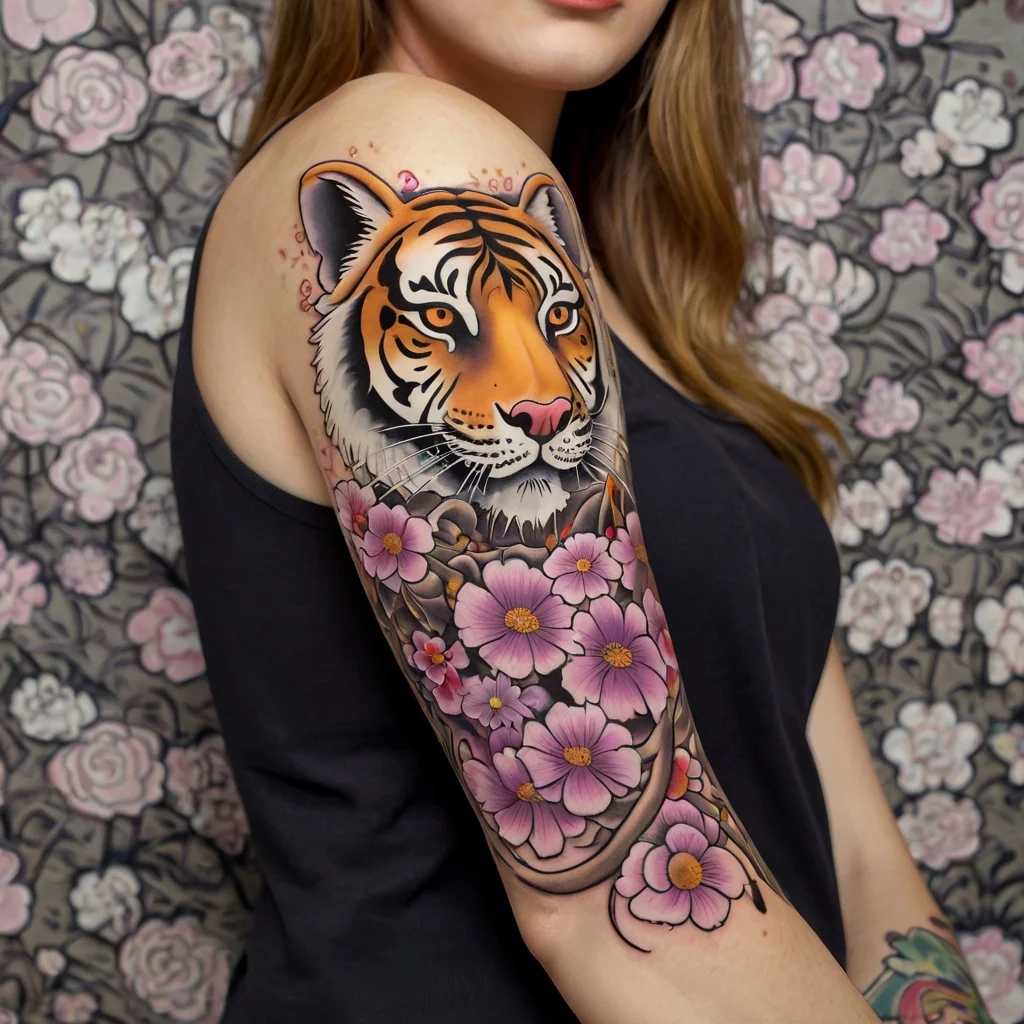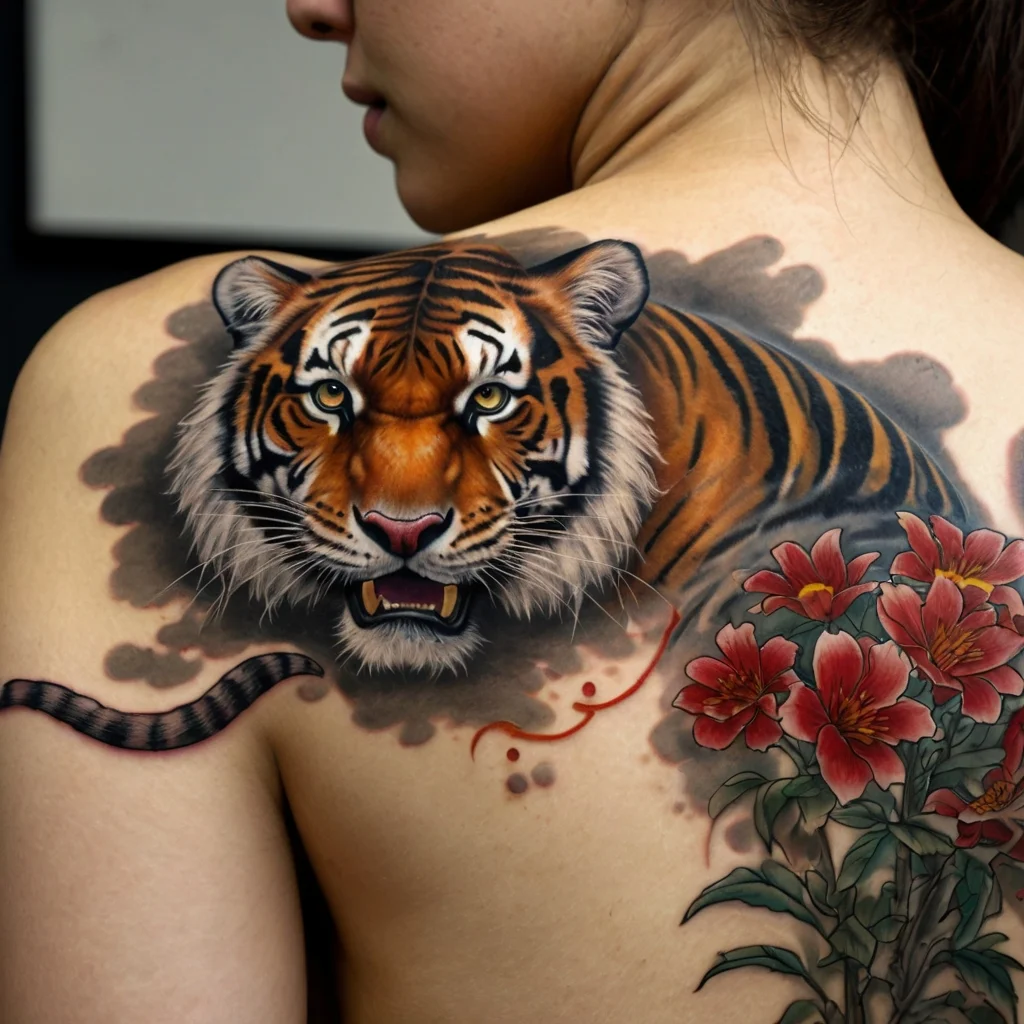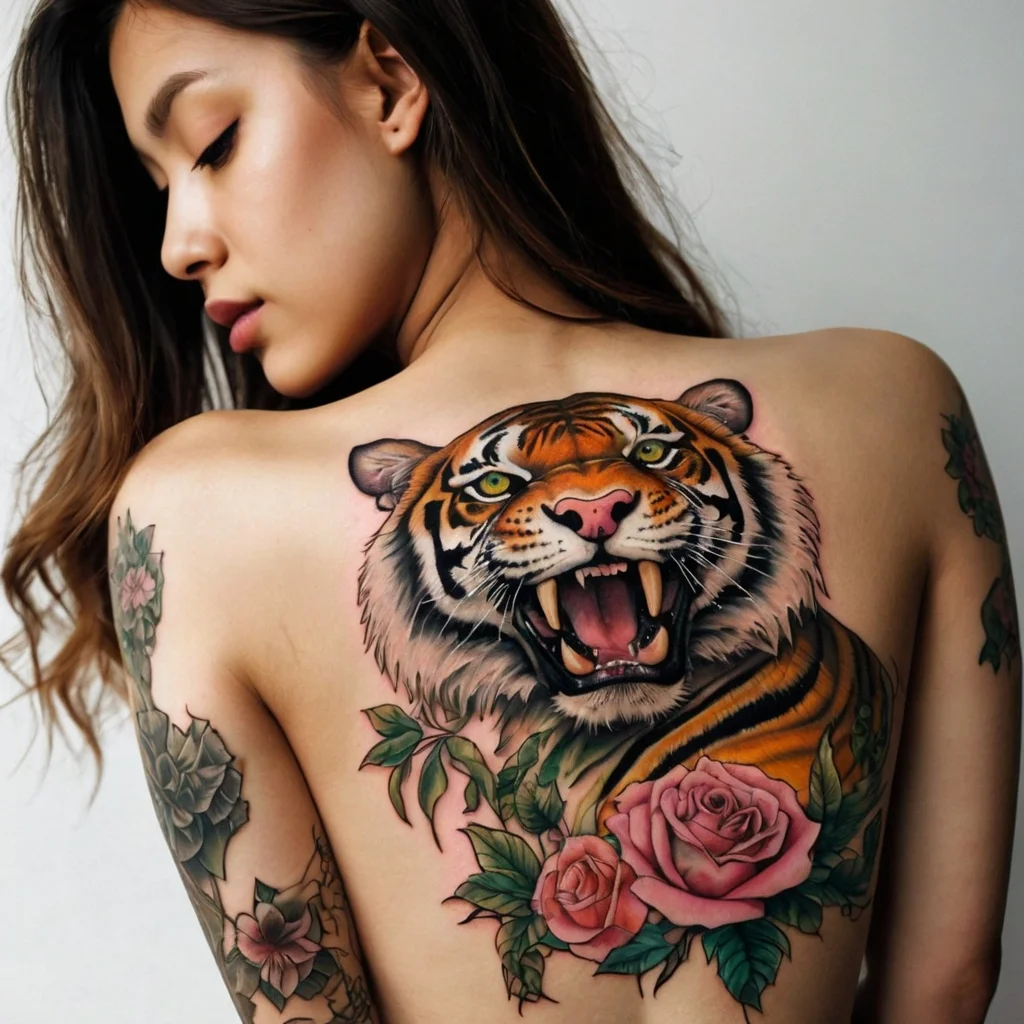Yokai Japanese tiger tattoos combine strength with mystery. Tigers symbolize power and courage, while yokai bring a supernatural twist. Together, they tell stories—of battles fought, demons faced, or the struggle between control and chaos. Some wear these tattoos for protection, others as reminders of personal growth. Each design holds meaning, shaped by tradition and the wearer’s journey. In this guide, we’ll explore 97 designs, from bold Irezumi techniques to creative ideas for placement. These tattoos are more than art. They have stories to tell.






Meaning Behind Yokai Japanese Tiger Tattoos
Spiritual Protection and Warding Off Evil
In Japanese culture, both tigers and yokai carry heavy symbolism. Tigers are seen as fierce guardians, known to chase away evil spirits and misfortune. When combined with yokai—some of which also act as protectors—the tattoo becomes a powerful shield. It’s more than just art; it’s a symbol of spiritual defense. Many choose this design to represent the fight against negativity, both from within and outside. It’s a way of saying, “I’m protected, and I’m ready.” The tiger’s strength and the yokai’s mystical nature work together to keep dark forces at bay.
Courage and Resilience
A tiger tattoo on its own speaks of strength and bravery. But when a yokai enters the design, it adds layers to that meaning. Some yokai, like Oni or Tengu, represent fearlessness, cunning, or the ability to outsmart trouble. Together, the tiger and yokai tattoo reflect more than just survival—they embody persistence. It’s about rising every time you fall, facing challenges head-on, and standing strong through life’s storms. This tattoo isn’t for the faint-hearted. It appeals to those who’ve fought battles—whether personal or external—and come out the other side tougher and wiser.
Connection to Nature and the Wild
Tigers represent the wild, the untamed spirit of nature. Yokai, too, often links to elements of the natural world—whether it’s mountain-dwelling Tengu or water-bound Kappa. Together, they create a design that speaks to a deep connection with the earth and its raw beauty. This tattoo appeals to those who feel at home in nature’s wildness. It celebrates freedom, unpredictability, and the power of the natural world. Wearing a Yokai tiger tattoo reflects the belief that we are part of something greater—untamable, beautiful, and full of mystery.
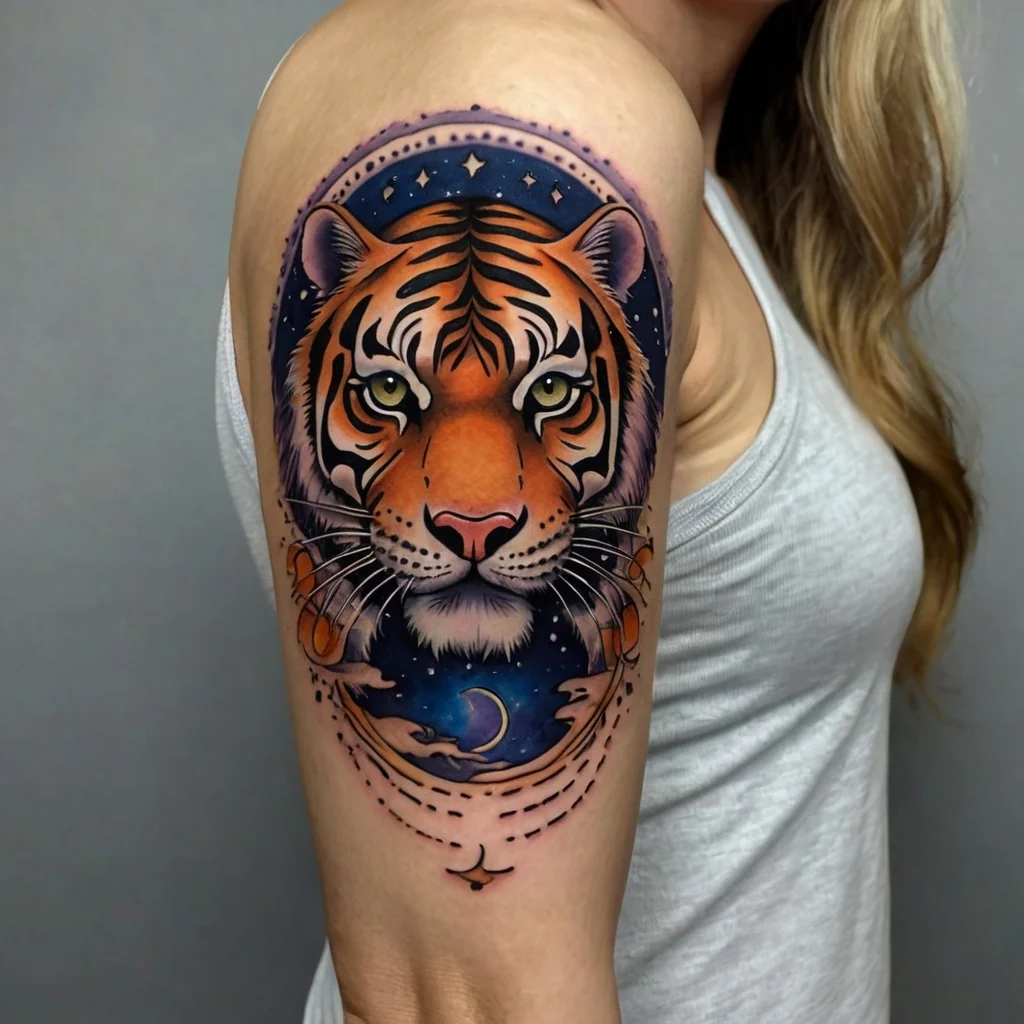




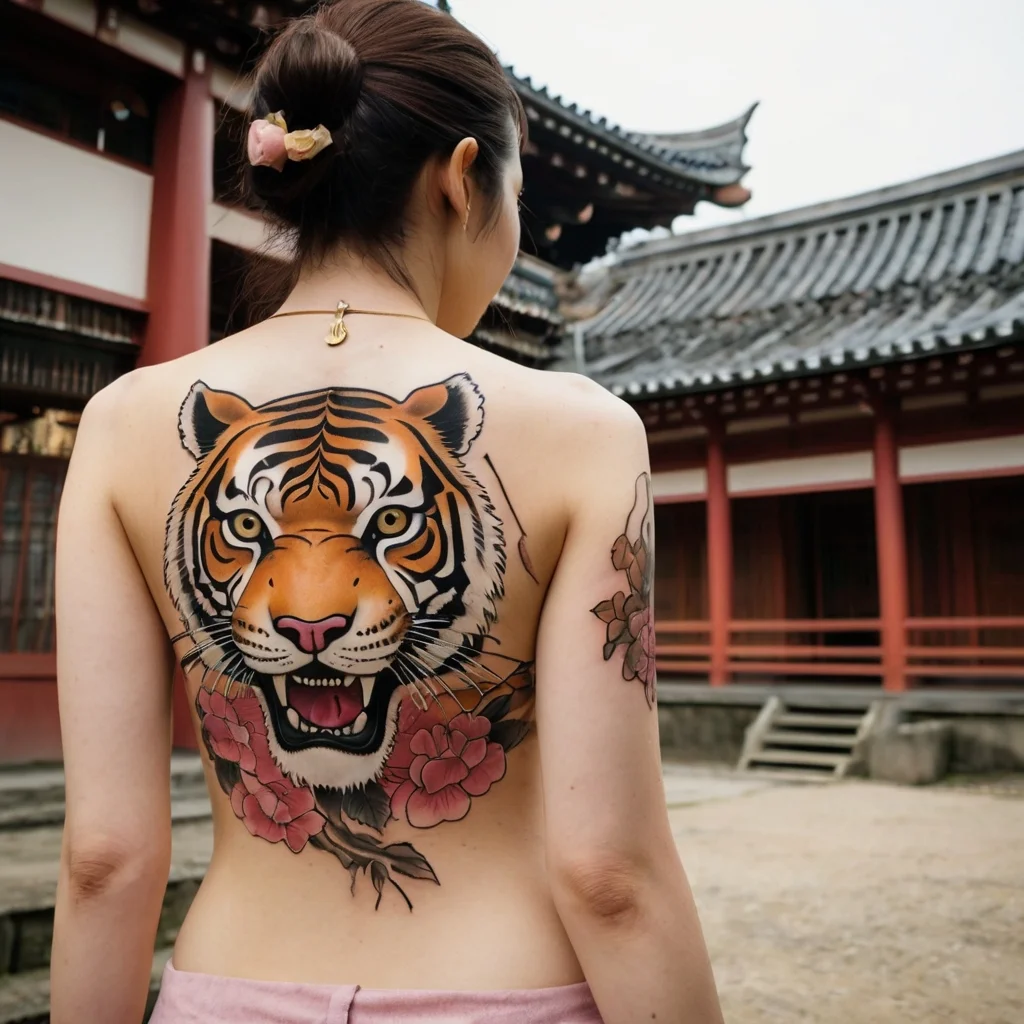
Symbolism of Tigers in Japanese Culture
The Tiger as a Protector
In Japanese culture, the tiger stands as a guardian. It’s believed to keep evil spirits and bad luck away. In ancient stories, people saw tigers as protectors against unseen dangers, both physical and spiritual. They embody safety, offering a sense of security to those who trust their strength. For this reason, tiger tattoos often symbolize protection. Someone might choose a tiger design to represent their role as a shield for loved ones or as a reminder to guard their own peace. It’s not just about physical strength—it’s about standing firm when life gets tough.
Strength, Power, and Courage
Tigers are the perfect symbol of strength and bravery. In Japan, they’re linked with warriors and leaders, known for their fearless nature. A tiger doesn’t run from a challenge—it meets it head-on. But it’s not just about raw force. Tigers also move with precision and grace, showing power through control. A tattoo with a tiger can serve as a reminder to stay strong during life’s struggles. It speaks to inner strength, the ability to overcome fear, and the courage to keep going, even when things get hard. For many, it’s not only a symbol of power but also a tribute to resilience.
Understanding Yokai: Japanese Spirits and Demons
Origins of Yokai in Japanese Folklore
Yokai has been part of Japan’s stories for centuries. These spirits and demons helped explain the unexplainable. They accounted for strange noises, sudden sickness, and unusual weather. Long before science offered answers, yokai filled the gaps. They weren’t just scary; they could be playful, protective, or even helpful if treated right.


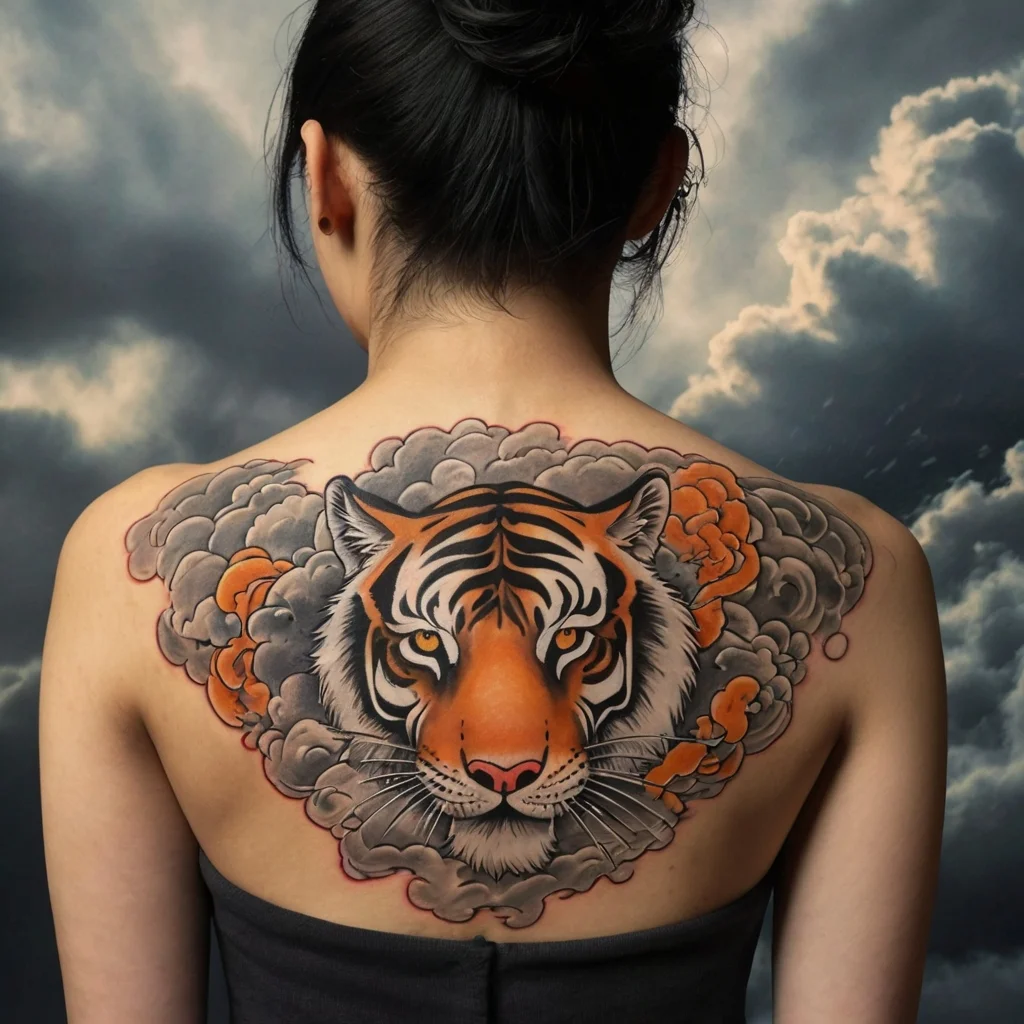



Many yokai come from Shinto beliefs, where spirits exist in nature—trees, rivers, and even objects. Others reflect ideas from Buddhism, showing how actions have consequences across lifetimes. As these stories were passed down, each yokai gained unique traits, making them more than just myths. They became characters people could relate to—some scary, others mischievous, and a few surprisingly kind.
Types of Yokai and Their Characteristics
There’s no one way to describe a yokai. Some are fierce and dangerous, while others are pranksters who love stirring up trouble. Here are a few well-known types:
- Oni: Huge demons with horns, often shown in red or blue. They carry clubs and are symbols of chaos and punishment, reminding people to follow the rules.
- Tengu: Part-human, part-bird creatures. They’re known to play tricks, but they also guard mountains and forests.
- Kappa: Water creatures with turtle shells. They love causing trouble but will respect anyone who treats them kindly or offers them a cucumber.
- Kitsune: Fox spirits with the power to change shape. They can be playful tricksters or wise guardians, depending on their mood.
Each yokai reflects something about human nature—curiosity, fear, and even hope. That’s part of what makes them so interesting for tattoos. A person might choose a specific yokai based on its traits or how it connects to their own story.
Yokai in Modern Japanese Art and Tattoos
Today, yokai are still part of Japanese life, but in new ways. You can find them in anime, manga, and movies, where their ancient legends mix with modern storytelling. These creatures have found a new home on skin too, as more people embrace yokai tattoos to express personal meaning.

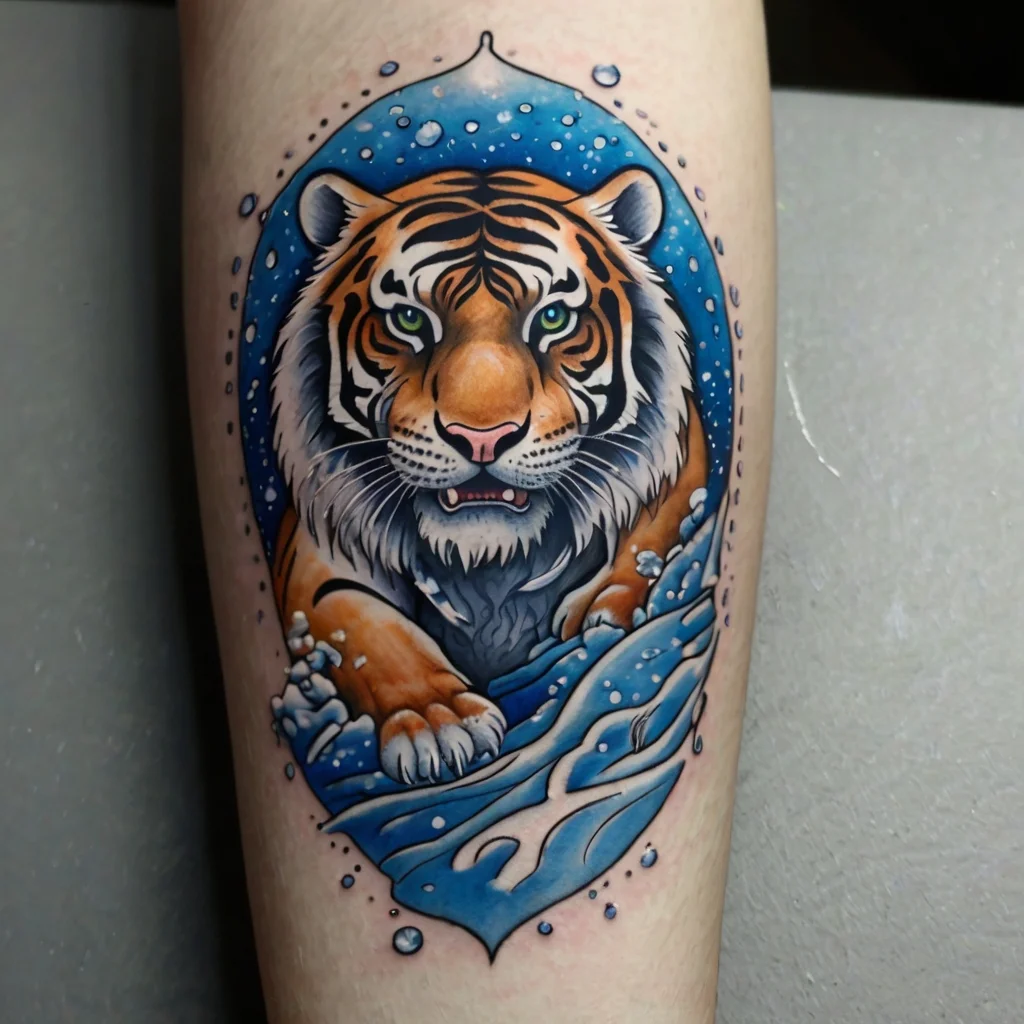




Tattoos inspired by Yokai aren’t just about looking cool. They tell stories. A yokai tattoo might represent the wearer’s wild side, a challenge they’ve overcome, or a lesson they’ve learned. When combined with other symbols—like a tiger—it adds even more depth. A tiger and a yokai together could reflect strength with a hint of mischief or courage born from struggle.
The Aesthetic Appeal of Yokai and Tiger Tattoos
Traditional Japanese Tattoo Techniques (Irezumi)
Irezumi is the heart of Japanese tattooing. Known for bold lines, deep shading, and flowing patterns, it turns skin into a canvas for storytelling. In the past, artists used tebori—a hand-poking technique that gives the tattoo a unique texture. Though many use machines today, some still seek out tebori for its rich, layered look.
Irezumi isn’t just about making something look good. It’s about meaning. Japanese Tigers, with their powerful stripes, symbolize strength in motion. A yokai spirit adds complexity to the design. It blends mythology and a personal story. Every swirl of smoke or crashing wave is intentional, pulling the eye deeper into the story.
Use of Color and Shading
Color makes these tattoos pop. Reds and blues are common, creating sharp contrasts. You might see an Oni glowing in red ink, set against a blue sky filled with swirling clouds. Deep blacks build the frame, grounding the design, while fine shading adds depth and movement.
You may also like Abstract Flower Tattoos: Meaning, Symbolism (114 Designs)
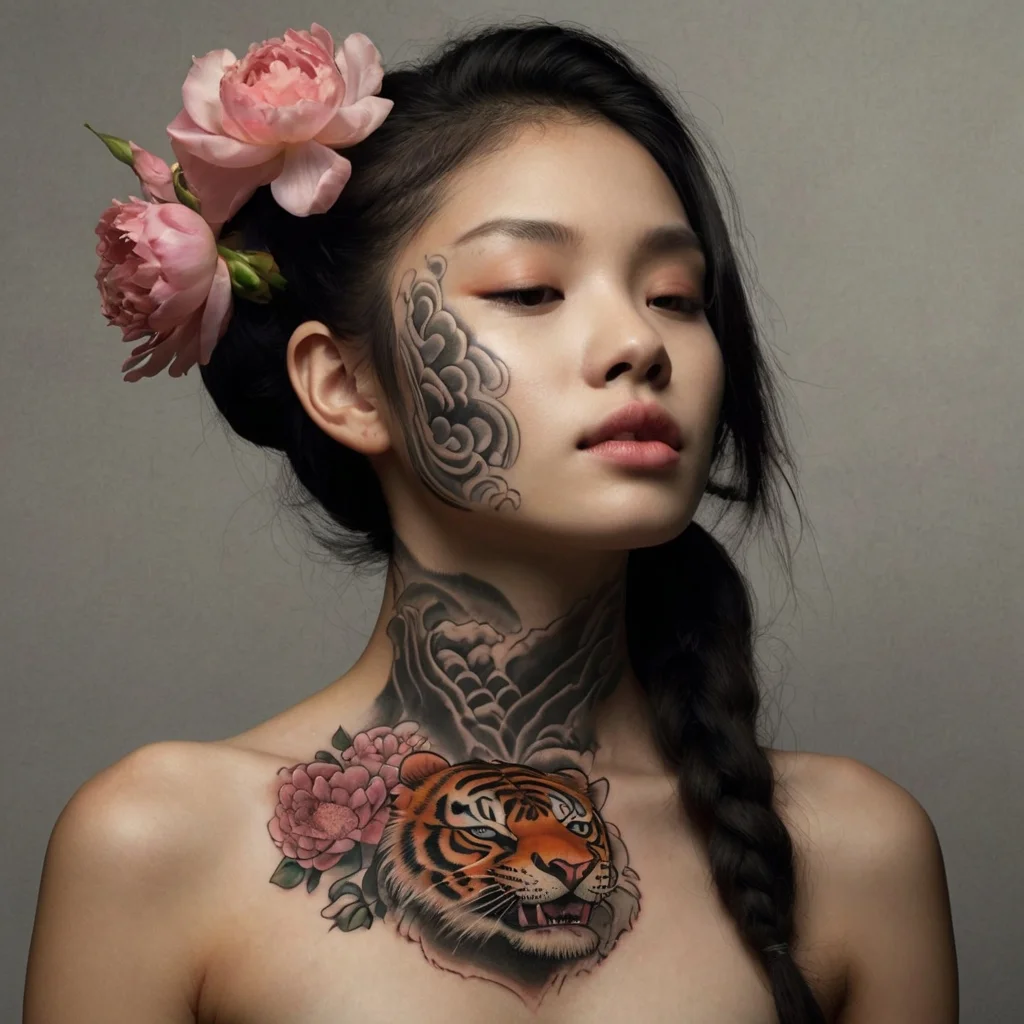

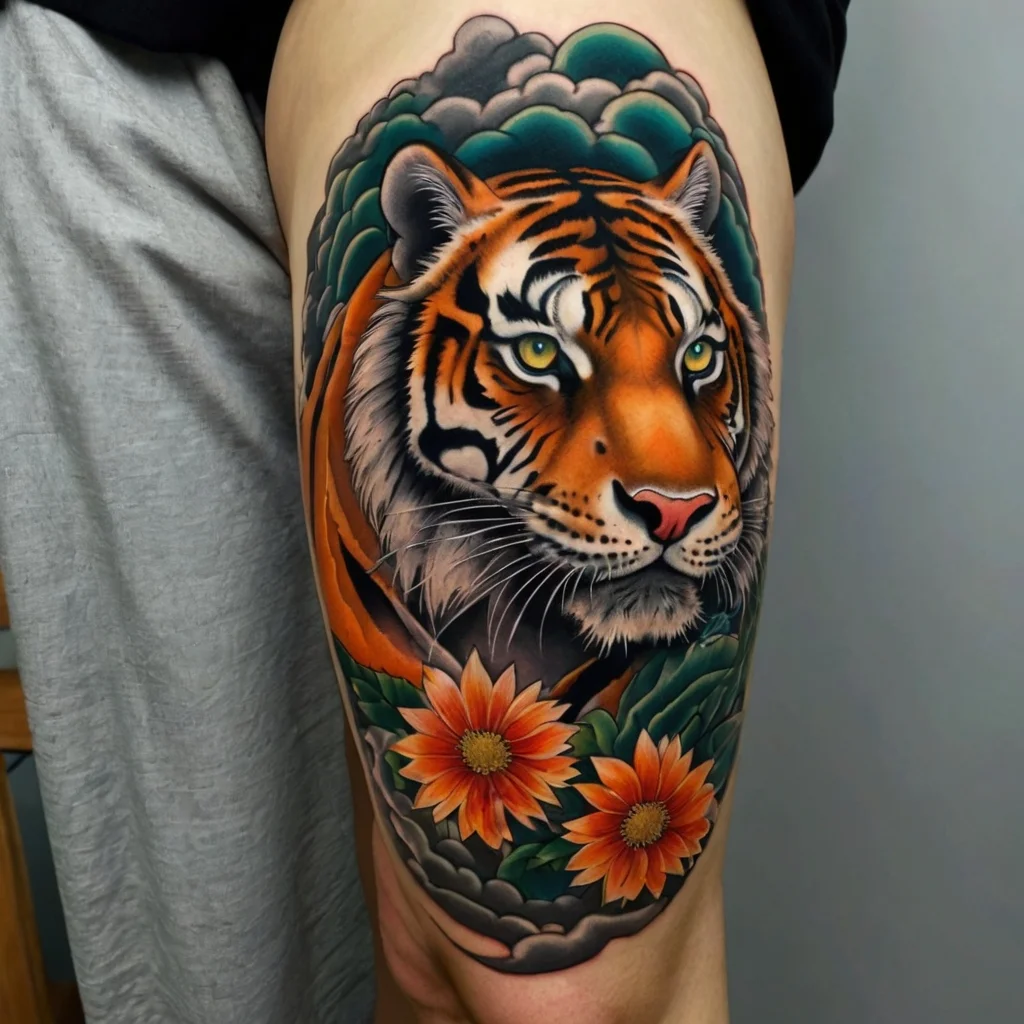



The color choices also carry symbolic weight. Golds and oranges in the tiger might hint at fortune and success. In contrast, darker shades in the yokai can suggest danger, mystery, or transformation. These colors don’t just sit on the surface—they pull the story forward, adding emotion and meaning to the art.
Female Tiger Tattoos
A female tiger tattoo represents fierce independence and grace. In Japanese culture, tigers are symbols of strength, and when portrayed as female, they embody both power and nurturing instincts. These designs often reflect balance—showing that strength doesn’t mean losing compassion.
Placement and Size Considerations
The placement of a tattoo changes its message. Large areas like the back or chest allow for expansive designs, where the tiger roams free among yokai spirits. These larger pieces feel like murals, with every detail working together to tell a complete story.
Smaller placements—like the arm or leg—offer a different kind of charm. A tiger’s snarling face or a mischievous yokai peeking through waves can pack a punch, even in a limited space. Careful shading ensures that even small designs stand out, giving them the same depth and intensity as larger ones.
Placement also adds personal meaning. A back tattoo can symbolize protection as if guarding the wearer against unseen threats. An arm tattoo shows strength at the forefront, always ready to act. No matter where the tattoo goes, it becomes a part of the person’s story. It’s something they carry with them, both physically and spiritually.






10 Yokai Japanese Tiger Tattoo Design Ideas To Have
1. Tiger with Oni Mask
Combine a roaring tiger with an Oni mask for a fierce, protective design. The tiger brings power, while the Oni adds a warning to anyone who might cross you.
2. Tiger and Tengu Guardian
A tiger leaping through clouds with a Tengu spirit gives the tattoo a mystical edge. The tengu symbolizes protection and cunning, balancing the tiger’s raw strength.
3. Water Tiger with Kappa Elements
Incorporate water patterns with Kappa imagery—like ripples or flowing rivers. This design shows adaptability and the ability to thrive, even in unpredictable environments.
4. Dual Tigers with Kitsune Figures
Two tigers, one in motion and one resting, with fox-like Kitsune peeking from the background. This piece explores duality—strength balanced by strategy.
5. Tiger Emerging from Yokai Smoke
The tiger is surrounded by smoke, with faint yokai faces forming within the clouds. This design suggests hidden dangers, resilience, and strength through life’s challenges.
6. Tiger Climbing a Mountain with Tengu Mask
A tiger scaling a rocky peak alongside a Tengu mask reflects personal growth. Perfect for those who see life as a series of obstacles to conquer.
7. Tiger with Oni Horns
Blend the tiger’s features with elements of an Oni—like horns or sharp claws. This design reflects inner struggles and the ability to harness both light and darkness.
8. Crouching Tiger in a Yokai Forest
A tiger hidden among swirling leaves, peeking through a forest filled with shadowy yokai figures. This piece symbolizes patience, stealth, and readiness to act.
9. Tiger and Dragon Yin-Yang Design
Combine the tiger and a serpent-like dragon to create a yin-yang effect. Add yokai symbols to represent a balance between the physical and the spiritual world.
10. Tiger with Blossoms and Playful Yokai
A softer take with a resting tiger surrounded by flowers and mischievous yokai figures. It captures a balance between strength and playfulness—ideal for those who want to show both sides of their personality.
Conclusion: Yokai Japanese Tiger Tattoos
Yokai Japanese tiger tattoos blend myth, strength, and personal meaning. Whether they ward off evil, show courage, or reflect your wild side, each design tells a story. Thoughtful details—like yokai faces or swirling clouds—add depth, making every piece unique. These tattoos are more than art. They become part of who you are, a mark of what you stand for and the challenges you’ve faced. Wherever life takes you, the spirit of the tiger and the mystery of yokai go with you—etched into your skin, always present.
















